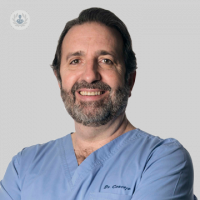3D technology used to smile
Written in association with: In recent years, medicine and dentistry have experienced great advances. In many cases, technological advances serve to develop new medical techniques. Thus, dental implantology has benefited from the development of technological innovations that facilitate the surgical process and avoid complications, such as 3D visualization.
In recent years, medicine and dentistry have experienced great advances. In many cases, technological advances serve to develop new medical techniques. Thus, dental implantology has benefited from the development of technological innovations that facilitate the surgical process and avoid complications, such as 3D visualization.
3D planning is a novel technique that has been implanted in the Maxillofacial Surgery , allowing placement of computer - guided implant. The technology is based on dental implants placed very accurately with the help of a template that is manufactured by three-dimensional planning programs.
To perform this template it is necessary to apply a scan of the jaw of the patient. The resulting images the scanner are included in a computer and through a sophisticated 3D planning software can see on the screen three - dimensional reconstruction actual size of the bones of the face.
When we obtained the patient's image on the computer, the program can simulate operations in the patient digitally. That is, we have the option to choose carefully and exactly the best places to place implants.
Having decided on the location of the new implant a surgical template can copy exactly the planning done is requested via Internet. This template is received in a few days and fits perfectly into the gums of the patient to place the implants through it.
The use of 3D technology is always indicated for patients who require dental implants, but especially in those cases where high precision is required, either for lack of bone or because it is a particularly visible area.
Advantages of 3D planningThe main advantage is the safety of the implant placement was made with a very precise system that ensures perfect placement of implants in the right place.
3D planning is so accurate that allows a temporary prosthesis prepared to screw the implants nothing place. It is what is called immediate loading prosthesis.
Other advantages of this technique is to be performed with minimal incisions, which are not required sutures and significantly reduces surgery time and postoperative patient discomfort.
Finally, note that 3D planning allows placing implants in complex cases where there is little bone as it allows us to observe and maximize all areas of the jaw, which would be almost impossible without the help of this technology.


